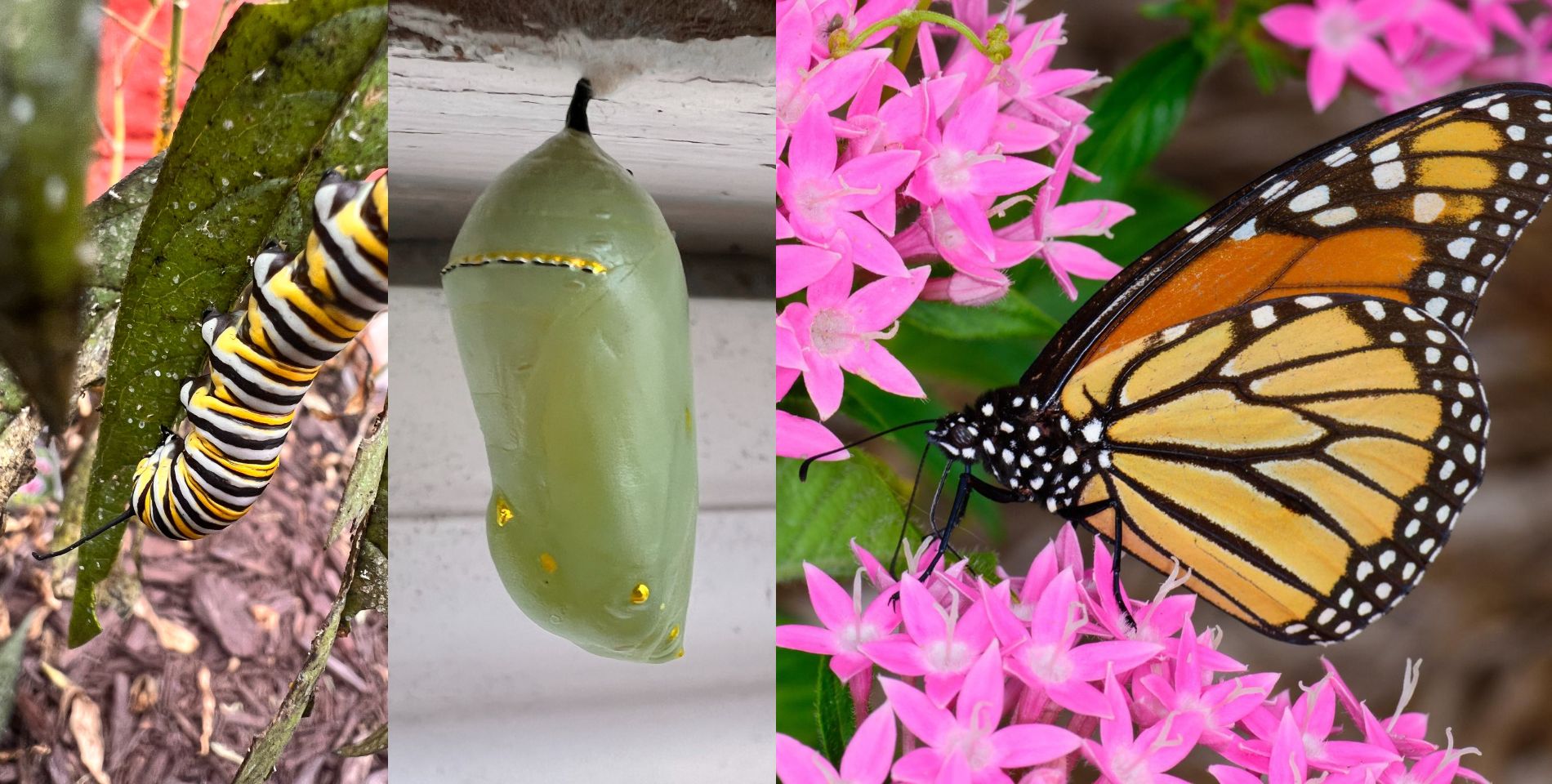A well-curated flower garden is magnificent on its own. Why not make it even better by growing Milkweed for Monarch butterflies? While Milkweed may not be the prettiest name for a flower, this plant is an essential part of the life cycle of Monarch butterflies and many other pollinators. Here are some of my tips on adding Milkweed to your pollinator garden.
What is Milkweed?
Milkweed is a perennial flowering plant with long, broad leaves. Milkweed grows in clusters up to 5 feet tall and comes in a stunning array of colors and sizes. Species can thrive anywhere from arid to tropical environments.
There are four species of Milkweed that I have planted in my garden here at Bay Haven Inn of Cape Charles. These include Common Milkweed (Asclepias syriaca), Tropical Milkweed (Asclepias curassavica), Swamp Milkweed (Asclepias incarnata), and Butterfly Weed (Asclepias tuberosa). I chose varieties that thrive in the northeastern region, but there are many species of Milkweed that you can customize for your butterfly garden.
Springtime Gardening and Monarch Butterflies
The best habitat for Monarch butterflies includes several Milkweed species and other nectar plants. Ideally, you should plant Milkweed in the spring so Monarch butterflies can enjoy the nectar in the fall. Additionally, plant them in a relatively sheltered area so the Monarch caterpillars have a cozy place to hang their chrysalis.
In the spring, the Monarchs will lay their eggs on the underside of the leaves. The butterfly larvae will eat the leaves when they hatch. Milkweed is essential to the Monarch because it produces cardiac glycoside compounds protecting adult and juvenile butterflies from predators. Unfortunately, these toxins were not enough to protect my Milkweed from aphids and Milkweed Bugs. You can use an insecticide called SAFER or ladybugs to make quick work of the aphids.
Innkeeper’s Gardening Tip: We are planting marigolds around the milkweed this year and just picked up 1500 LIVE ladybugs who eat aphids!
Fall Gardening and Monarch Leaves
Early that first fall, I was alarmed to find caterpillars eating my Milkweed plants. After placing them all in a jar, I soon realized that those caterpillars were Monarch butterfly caterpillars. The caterpillars need to eat the leaves to form a chrysalis to continue their transformation into Monarch butterflies. After learning this, I placed the caterpillars back on the Milkweed and let them enjoy their buffet!
Upon completing their magical transformation, the Monarch butterflies will grace your garden with their colors before continuing south for the winter.
Experience our Milkweed Garden and Monarch Butterflies
Monarch butterflies perform a breathtaking fall migration from Canada to Mexico. The front porch at the Bay Haven Inn of Cape Charles is the perfect place to sit and watch these beauties rest in the garden. While they sip nectar from the Milkweed and other flowers, you can sip coffee or tea and enjoy the serenity of nature. Come and visit us this spring or fall to watch the miracle of the Monarchs and the Milkweed.





